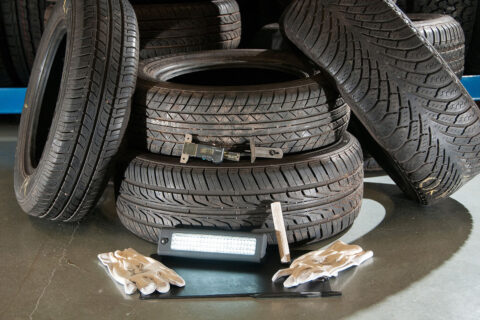
With less tread depth than a brand-new tyre, part-worn tyres will generate less grip, particularly in the wet. That means your car will have less traction and – more importantly – less cornering and braking grip.
A survey carried out by TyreSafe found that up to 98% of used tyres sold in Britain did not comply with the regulations, while 34% could be considered dangerous. However, even a tyre that does satisfy the regulations could be harbouring a nasty secret, whereas a brand-new tyre will not.
In addition, during a government investigation, it was found that 85% of part-worn tyres were non-compliant as they were incorrectly marked. Some 11% of part-worn tyres were found to be over 10 years old.
Here are a few more problems the investigation into part-worn tyres found:
- Some tyres had cuts in the primary tread area, which were deep enough to expose the metal cords
- Tyres fitted incorrectly, with the outside sidewall of the tyre fitted to the inside of the wheel rim
- Abnormal bulges in one of the sidewalls
- Repairs that did not conform to British Standard, including a ‘string’-type plug that does not form a permanent seal and may not be secure
- Hard objects penetrating the tyres
Alternatives to part-worn tyres
In years gone by, remoulded tyres, or retreaded tyres, were a popular solution. Remoulds are still legal in the UK, so long as they comply with strict regulations, and if manufactured with care they needn’t be significantly less safe than new tyres.
Retreading a tyre involves stripping the tread and sidewall from a used tyre (the structure of which should be in good condition) and applying new rubber to the carcass. As budget tyres from the Far East have become more commonplace, though, remoulded tyres have become less popular.
Should I buy part-worn tyres?
If we could guarantee that part-worn tyres were completely safe and compliant with the regulations, there’d be little reason to be wary of them. However, as those TyreSafe figures demonstrate, there are no such assurances.
If there is one area of car maintenance on which you shouldn’t scrimp on cost, it’s the only part of the car that actually makes contact with the road – the tyres. Ultimately, it is down to personal choice and whether you are willing to accept that it could offer a false economy, as well as be potentially dangerous.
